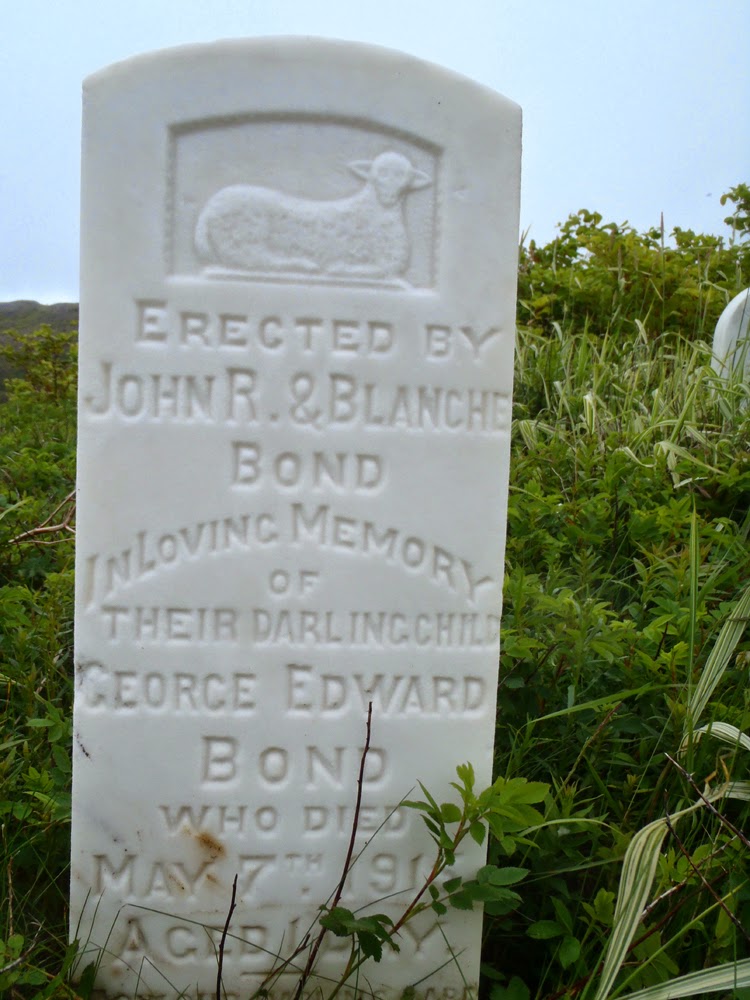1 week ago
Monday, July 28, 2014
The graveyard at Crants Cove
When you paddle around the point from Stones Cove the first thing that catches your eye is the massive hill and then the white grave headstones beneath it. We got out at Crants Cove to have a look.
The community of Crants Cove is another of the hundreds of resettled communities of Newfoundland. When the residents left, they left behind the history of the community as embodied in the white tombstones.
The graveyard is all overgrown with only the markers along the edges visible. Somewhere in there many more are hidden.
A gagged line of headstones look out upon a sea where the livelihood of Crants Cove swam.
We had gotten out for a walk around Stones Cove before arriving at Crants Cove. It was a barren, rocky place and we remarked that vegetable farming must have been impossible there are there was very little topsoil. I walked farther inland to see if there was a graveyard because I was told there was one. There wasn't.
The mystery was solved though at Crants Cove. I snapped some shots of the headstones to research them later at home. This one marks the final resting place of Martha Thornhill. A search of the 1921 census showed she was a resident of nearby Andersons Cove.
The Bond name is prominent in the census of Stones Cove. A review of the 1921 census showed the parents of George Edward Bond, John R. and Blanche, resided in Stones Cove. Their child George died in 1916 at one day old but the census indicated they had two other children in 1921. It was harsh place and if there were complications at birth there wasn't anything anyone could do to change fate.
Two more children of Thomas and Ida Francis of Stones Cove lie here. Emily Ellen at eight days and John Robert at 6 1/2 months. It had to be heartbreaking for the parents, the little lamb left for us to ponder how fragile life was without modern medical attention.
So, the mystery of the graveyard for Stones Cove was solved. They and the residents of nearby Andersons Cove buried their loved ones in Crants Cove, the only place with enough soil in which to dig a grave.
As I walked around the outer edge of the graveyard I wondered what kind of life these people had. There were dangers living in such isolated places but there must also have been great rewards.
The struggle for survival would have been tenuous with food coming from the sea and land. Meat would have consisted of rabbits and caribou and vegetables probably consisting of mainly potatoes grown in the precious little soil. Wild berries supplemented the diet.
They would have had a close knit community where everyone pulled together and while they had worries, they didn't have some of the worries we have today. I suspect in many ways they were more carefree.
Those people are gone and their descendents scattered who knows where. I wonder if any give a thought to the those left behind on that barren outcrop of land very few people visit anymore?
Subscribe to:
Post Comments (Atom)









No comments:
Post a Comment